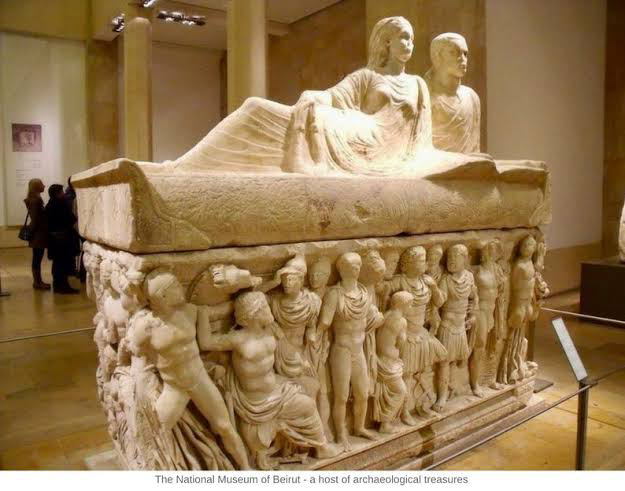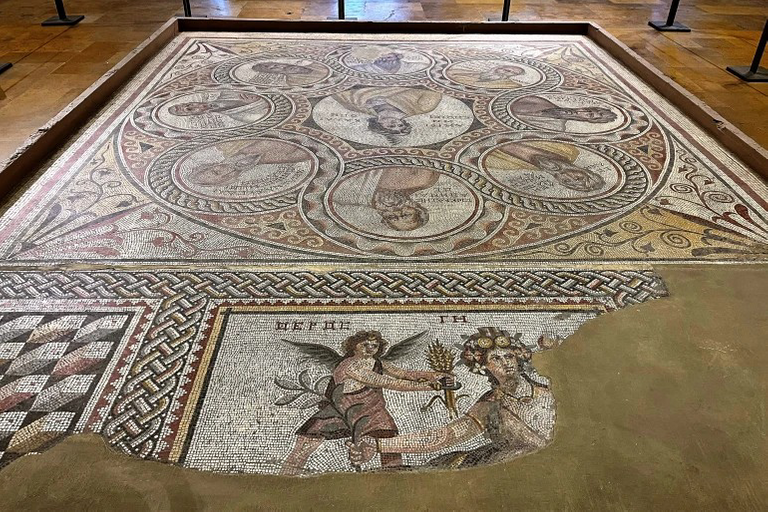Hello InformationWar platform!
One of the challenges facing the Lebanese society is the recent power shortages experienced by the citizens of the country. It's very obvious that everything relating to economic activities depends on electricity to thrive.

This challenge isn't just predominant to the economic activities alone, it has also creeped into the national museum in Beirut and other museum housing great artifacts of antiquities.

The severe power shortages plaguing Lebanon are not only hitting homes and private institutions, but are also affecting major cultural centres and putting priceless exhibits at risk.
The National Museum of Beirut experienced even worse blackouts than usual over two weeks in August, receiving only one or two hours a day of state-provided electricity, with no funds for generator fuel.Source
With just one or two hours of electricity isn't good enough to preserve those priceless artifacts that have been preserved for centuries and are means of livelihood. It should be noted that over 150 people visit the museum on a daily basis and with the recent power shortages many of the proposed visitors are either restricted or allowed without payment of the entry fees.
The Culture Ministry says it has resolved the situation for now by providing the museum with funds to buy generator fuel, which is essential for protecting the exhibits requiring climate control.Source
According to the Culture Ministry that it has provided the museum funds to fuel their generators to power the museum, although, no hope was given to the museum officers on future provision of funds for the museum.
This will lead me to ask this vital question, what has been happening to the revenues raised by the museum officers on a daily basis? Are the revenues remitted to the state government!
Since it has been proven by the report that tourists pay for entry into the museum, then the museum authorities shouldn't depend on the Culture Ministry to fund the fueling of the museums generator plants, expect they want me to assume that the authorities have been embezzling the museum funds for their personal aggrandizement
Opened in 1942, Lebanon’s principal archaeology museum currently displays about 1,300 artefacts from a collection of 100,000 pieces ranging from prehistoric times to the Roman, Phoenician, Byzantine, and Mamluk periods.
For the museum’s stone objects, climate control is not an issue.
But for items such as frescoes, mummies and textile, metal or organic artefacts like Bronze Age weaponry and Roman leather armour, temperature and humidity control – and therefore power – is essential.Source
Looking at the qualities of archaeological artifacts that's mentioned above and the times they've existed and preserved, then the Lebanese government should do anything to keep those artifacts safe like the Ukrainians did in the early days of the war.
Extreme weather conditions is truly a challenge to those artifacts and restoring power is high needed on a daily basis.
As a professional Librarian, I believe 100% of information materials whether in paper or in artifact form require constant electricity to help preserve them for a long. Well, I just hope Lebanon should recover instead of fueling generators.
I think any means they use to preserve the artifacts is worth it. Thanks for stopping by
Any means you said, you can't just do that to the preservation of information materials because there are general ways in which to achieve that and it's measured through constant electricity to enable them warm, free from dust, and also make the environment not to be conducive to rodents, termites, rat and many more. Are you also aware that artifact and other information materials whether from a Library, Museum, Archives, ICT, and many more requires air-conditioning?
What do you understand by any means in terms of providing electricity for the museum?